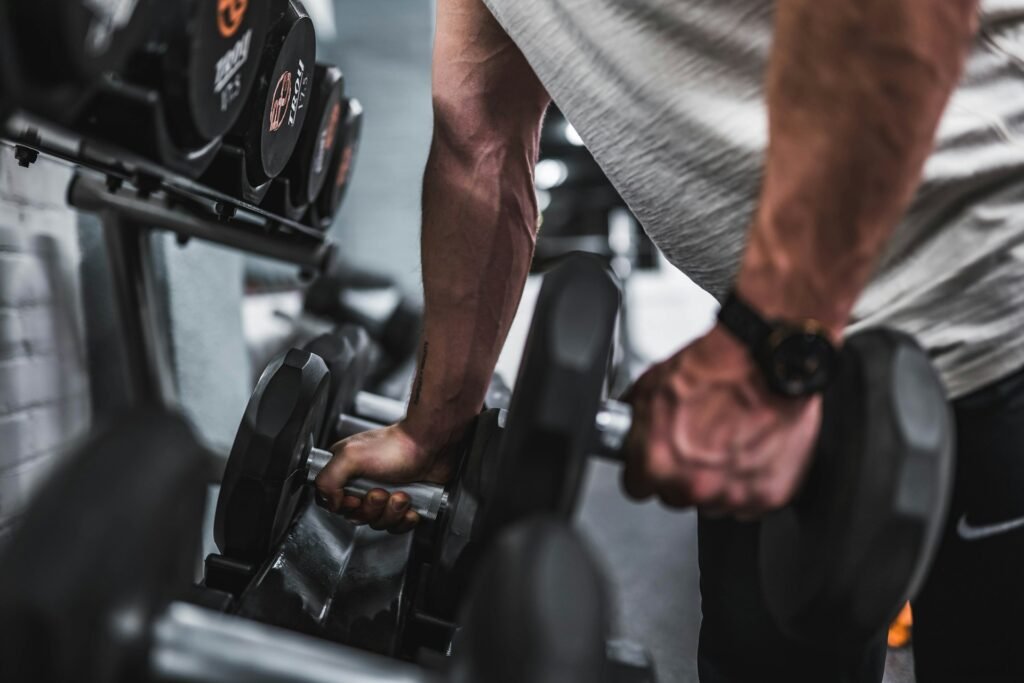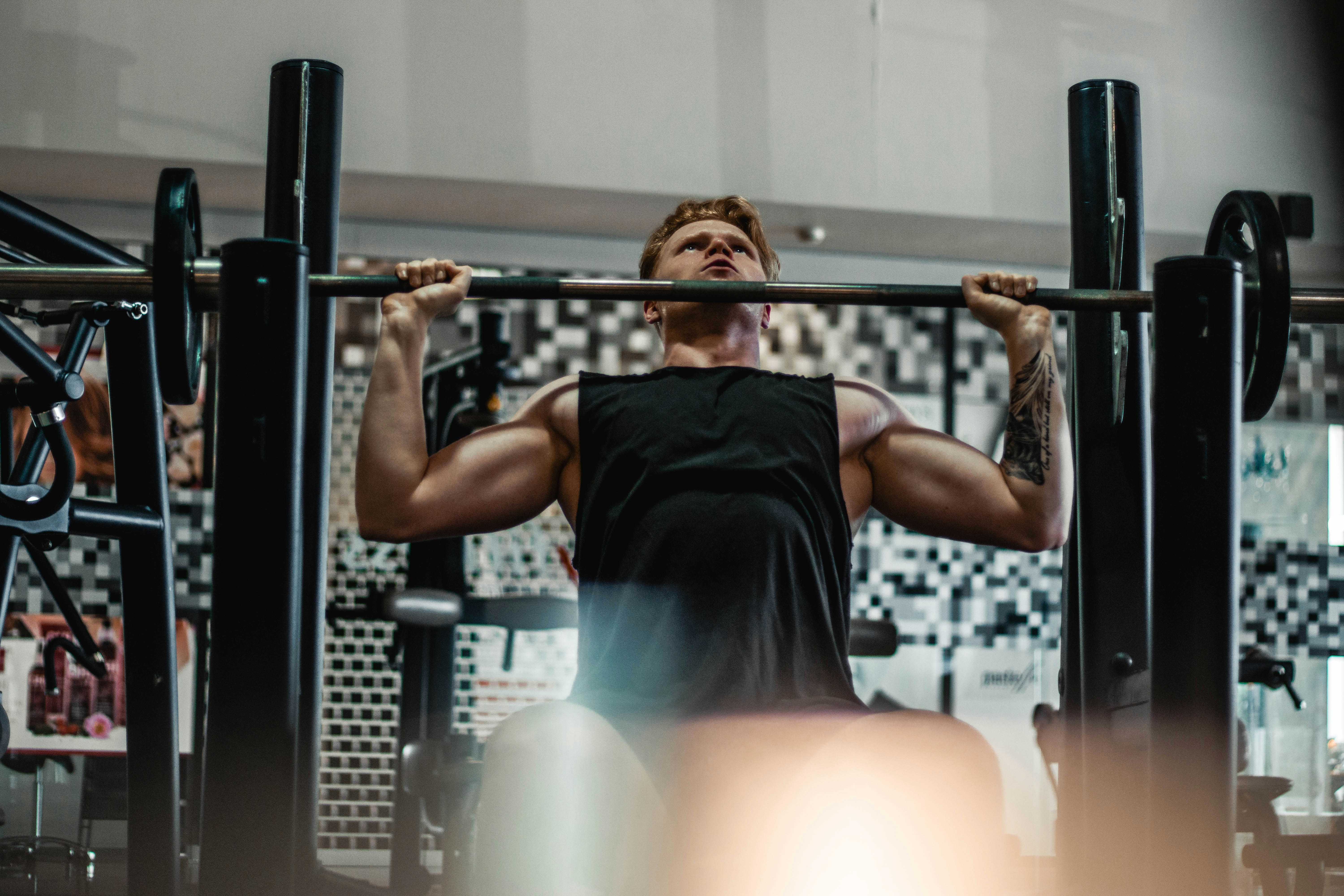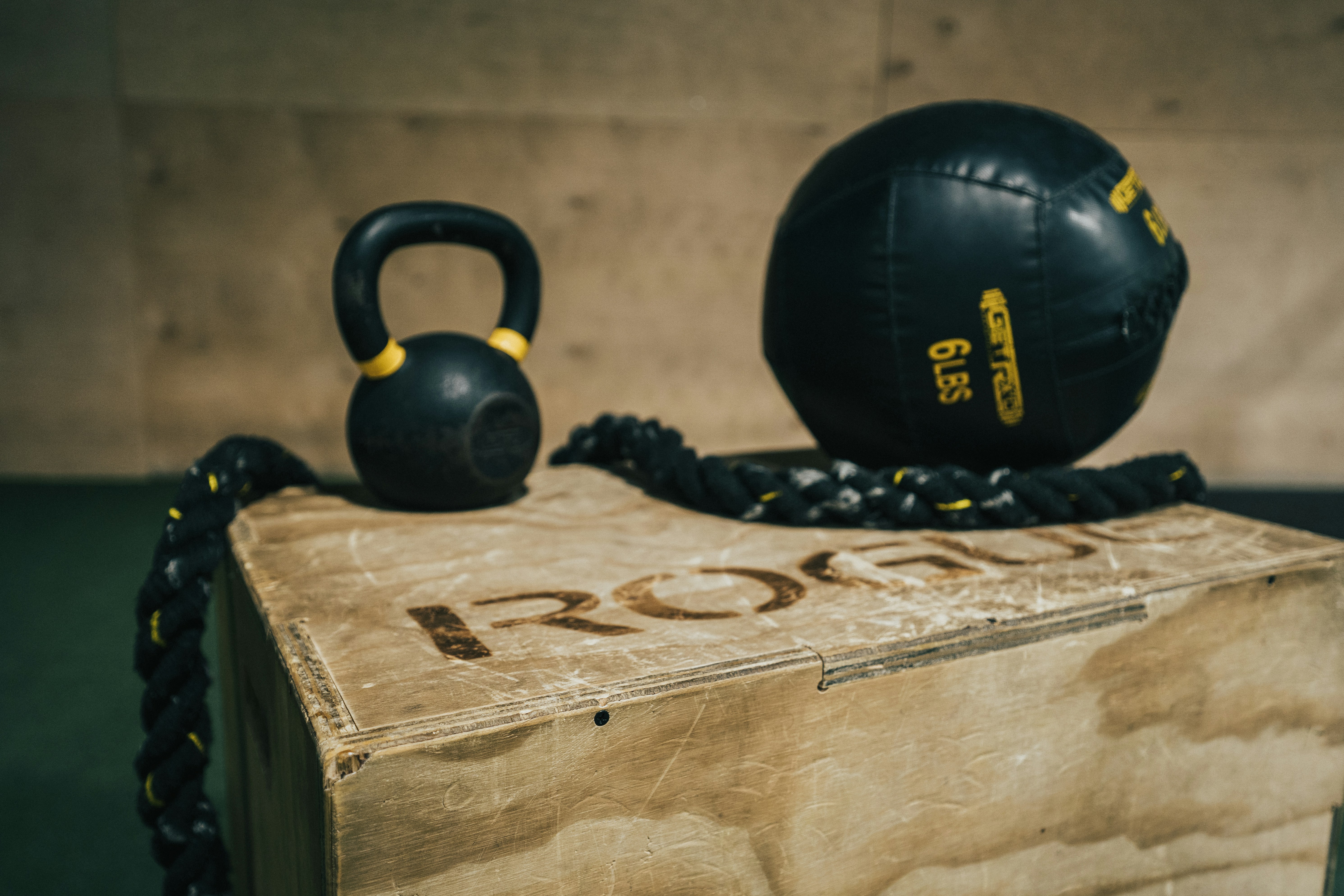
Photo by Anastase Maragos on Unsplash
The shoulder press is a popular exercise for building upper body strength, but it is not always the best option for everyone. One reason to consider alternatives is to avoid overuse injuries. Repeatedly performing the same movement can lead to muscle imbalances and joint stress. According to a study by the American Council on Exercise, varying exercises helps reduce the risk of injury and ensures balanced muscle development.
Another consideration is accessibility. Not everyone has access to a barbell or shoulder press machine, especially when working out at home. Dumbbell and kettlebell exercises can be more convenient and offer similar benefits. For example, the kettlebell halo engages multiple muscles, including the shoulders, core, and upper back, making it an efficient full-body workout.
Alternatives like the cable front raise and the Smith machine shoulder press can also provide different angles and levels of resistance, which can be more effective for muscle growth. Jeremy Ethier, a fitness and exercise expert, mentions that incorporating variations in your workout can lead to better muscle activation and improved strength gains (source).
Additionally, safety can be a concern with traditional shoulder presses. Exercises like the Smith machine shoulder press add stability, reducing the risk of improper form and potential injuries. This is particularly beneficial for beginners or those with a history of shoulder injuries.
For more on the benefits of varying your workouts and preventing overuse injuries, you might find our article on low-impact cardio for bad knees helpful.
Primary Muscle Groups Targeted by Shoulder Press
The shoulder press is a key exercise for targeting several primary muscle groups in your upper body. Here’s a closer look at the main muscles worked when performing this classic move:
Deltoid Muscles
The deltoids are the prime movers in the shoulder press. These muscles are located at the top of your shoulder and are divided into three parts:
- Anterior Deltoid: Positioned at the front of your shoulder, it plays a crucial role during the upward phase of the press.
- Lateral Deltoid: Located along the side of your shoulder, it assists in raising your arm to the side.
- Posterior Deltoid: Found at the back of your shoulder, it is less involved but provides overall shoulder stability (Cleveland Clinic).
Triceps
The triceps, located on the back of your upper arm, are significantly engaged to help straighten your elbow during the press. This muscle group works hard, especially when pushing towards the lockout position (Airrosti Rehab Center).
Trapezius
The trapezius muscles in the upper back help stabilize the shoulders. These muscles extend from the back of your neck to the middle of your spine and support the lifting motion by stabilizing the shoulder blades.
Core Stabilizers
Your core muscles, including the abdominals and lower back, engage to keep your torso stable and upright. This is essential for maintaining proper form and avoiding injury during the exercise (American Council on Exercise).
Incorporating the shoulder press into your routine can significantly enhance your upper body strength and stability. For more tips on how to strengthen your shoulder muscles effectively, check out our Dumbbell Shoulder Workout Guide.
Barbell Shoulder Press: A Classic Option

Photo by Arthur Edelmans on Unsplash
The barbell shoulder press, also known as the overhead press or military press, is a timeless exercise that targets the shoulders, triceps, and upper chest. As a fundamental movement in strength training, the barbell shoulder press builds functional strength and enhances upper body stability. According to BarBend, the overhead press is one of the “big four” lifts that athletes should include in their workout regimen [^1^].
To perform the exercise, position a barbell at shoulder height in a squat rack. Grip the bar with hands slightly wider than shoulder-width apart and unrack it, stepping back to stabilize your stance. Press the barbell overhead while keeping your core engaged and maintaining a neutral spine.
Benefits of Barbell Shoulder Press
- Upper Body Strength: This exercise mainly focuses on the anterior deltoids, but it also involves the triceps and upper chest, making it a comprehensive upper body workout.
- Core Stability: Although the primary muscles worked are in the upper body, your core and lower body muscles engage to maintain balance and stability.
- Functional Fitness: Lifting a barbell overhead is a movement applicable to many real-life activities and sports, making this exercise highly functional.
Key Statistics
- In a study published by the National Strength and Conditioning Association, performing the barbell shoulder press significantly improved shoulder strength by up to 20% over a 12-week period [^2^].
- Lifting a barbell overhead also helps in burning calories, with an estimated expenditure of 100-150 calories in a 30-minute session, according to various fitness trackers.
Tips for Beginners
- Start Light: Use an empty barbell or light weights to get accustomed to the movement.
- Correct Form: Focus on form rather than weight. This reduces the risk of injury and ensures maximum benefits.
- Gradual Progression: As your strength increases, gradually add more weight to avoid overloading your muscles too soon.
For a comprehensive shoulder workout, you might also want to explore different types of shoulder exercises. Check out our article on barbell shoulder workouts for more variations.
[^1^]: BarBend: How To Overhead Press | Variations | Alternatives | Who Should Overhead Press | Sets and Reps | Benefits [^2^]: National Strength and Conditioning Association: “The Overhead Press: Benefits and Muscles Worked”
Kettlebell Halo: Engaging More Muscles

Photo by Ryan De Hamer on Unsplash
The kettlebell halo is a fantastic exercise that not only improves shoulder mobility but also engages multiple muscle groups in a single, fluid movement. When you perform a halo, you hold a kettlebell by the horns and move it in a circular motion around your head. This seemingly simple maneuver targets your shoulders, particularly the deltoids, and involves muscles in your upper back, such as the trapezius. Additionally, the triceps and core muscles help stabilize the movement, making the exercise more comprehensive.
According to Quora fitness expert Andrew Ferebee, the kettlebell halo engages the shoulders, deltoids, chest, and even the lats (Quora). The exercise’s continuous motion enhances shoulder health by promoting functional mobility and stability.
Effective muscle engagement also relies on progressive overload, as Taco Fleur, another fitness coach, notes: “Using more weight than your muscles are accustomed to over time” is crucial in maximizing the benefits of the kettlebell halo (Quora). To build muscle effectively, start with lighter weights to master the form and gradually increase the weight to continuously challenge your muscles.
For those looking to integrate a well-rounded shoulder workout, consider incorporating the kettlebell halo as a complementary exercise to more traditional strength training moves. This exercise not only contributes to muscle growth but also enhances functional strength and flexibility.
For further information about barbell exercises to complement your kettlebell routine, check out our detailed guide on barbell shoulder workouts.
Cable Front Raise: Isolating Shoulder Muscles
The cable front raise is an effective exercise for targeting the anterior deltoids, which are the front parts of your shoulder muscles. One of the main benefits of using a cable machine for this exercise is the constant tension it provides throughout the entire range of motion. This constant tension results in a more effective workout compared to using free weights.
To perform a cable front raise, attach a straight bar or a single handle to the low pulley of a cable machine. Stand facing away from the machine, grab the handle with an overhand grip, and lift the handle to shoulder height. Lower it back down slowly to maximize muscle engagement.
One study indicated that the use of cable machines in resistance training exercises can increase muscle activation by approximately 30% compared to using free weights [1]. This makes it an excellent option for those looking to build shoulder strength and muscle mass.
In addition to the anterior deltoids, the cable front raise can also engage the pectoral muscles and the upper traps, providing additional upper body benefits. This exercise is particularly useful for those who want to achieve well-rounded shoulders, and it is a suitable alternative for those who experience discomfort with traditional shoulder press exercises.
For other effective shoulder exercises, check out our at-home dumbbell shoulder workout.
[1]: Strength and Conditioning Journal
Smith Machine Shoulder Press: Stability and Safety
The Smith Machine Shoulder Press is an excellent exercise for those looking to ensure both stability and safety while building shoulder strength. Unlike traditional free weights, the Smith machine’s guided barbell path minimizes lateral movements, providing a controlled and predictable motion. This makes it an ideal option for beginners or those recovering from injuries.
The fixed path of the Smith machine allows you to focus on the primary muscle groups—namely, the anterior and lateral deltoids—without worrying about stabilizing the weight. This added stability reduces the risk of injury significantly. According to Major Fitness, the machine’s design also helps maintain proper posture, which is essential for avoiding shoulder strains.
Safety features, like built-in safety stops, add another layer of security. These stops allow users to quickly rack the weight if they find themselves unable to complete a lift, minimizing the risk of dropping the bar. This feature can be particularly beneficial on shoulder-heavy days or for lifters who generally train without a spotter.
One study found that using the Smith machine can relieve lower back stress compared to free weights. For individuals with back issues, this makes the Smith machine shoulder press a safer alternative. By utilizing the support of the Smith machine, you reduce the need for core and lower back engagement, allowing for a more isolated focus on the shoulder muscles.
For those looking for additional shoulder workouts, consider checking out our detailed guide on Barbell Shoulder Workouts for more options.
In summary, the Smith Machine Shoulder Press offers a balance of stability, safety, and effectiveness, making it a valuable addition to any shoulder workout regimen.
Final Thoughts: Customizing Your Shoulder Workouts
Customizing your shoulder workouts is essential for maximizing strength and minimizing the risk of injury. Consider adjusting exercise types, weights, and repetitions based on your individual fitness level and goals. Incorporating a mix of exercises such as the Barbell Shoulder Press, Kettlebell Halo, and Cable Front Raise targets different angles and muscle groups to provide a well-rounded routine. For instance, a study found that exercises like the Barbell Shoulder Press activate the anterior deltoid more effectively when performed at various angles [^1^].
Statistics show that a balanced approach to shoulder exercises can improve shoulder strength by up to 15% over three months [^2^]. This can also prevent overuse injuries commonly associated with repetitive motions. Ensuring you include exercises that focus on stability, like the Smith Machine Shoulder Press, can add an extra layer of safety to your regimen.
Remember, the key to a successful workout plan lies in its diversity and adaptation to personal needs. Don’t hesitate to adjust your routine regularly to keep muscles challenged and prevent plateaus.
For more tips on creating effective workout plans, visit our Back Exercises With Barbell Guide.
[^1^]: Trebs AA, Brandenburg JP, Pitney WA. An electromyography analysis of 3 muscles surrounding the shoulder joint during the performance of a chest press exercise at several angles. J Strength Cond Res. 2010 Jul;24(7):1925-30. [^2^]: McCausland C, Sawyer E, Eovaldi BJ, et al. Anatomy, Shoulder and Upper Limb, Shoulder Muscles. StatPearls Publishing; 2024 Jan-.